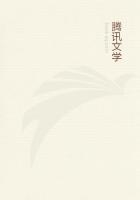
第22章
Rydberg uses it, will not pick every mythologic lock, though it undoubtedly has opened many hitherto closed.The truth is that man is a finite animal; that he has a limited number of types of legend; that these legends, as long as they live and exist, are excessively prehensile; that, like the opossum, they can swing from tree to tree without falling; as one tree dies out of memory they pass on to another.When they are scared away by what is called exact intelligence from the tall forest of great personalities, they contrive to live humbly clinging to such bare plain stocks and poles (Tis and Jack and Cinderella) as enable them to find a precarious perch.
To drop similitudes, we must be prepared, in unravelling our tangled mythology, to go through several processes.We must, of course, note the parallelisms and get back to the earliest attribution-names we can find.But all system is of late creation, it does not begin till a certain political stage, a stage where the myths of coalescing clans come into contact, and an official settlement is attempted by some school of poets or priests.Moreover, systematization is never so complete that it effaces all the earlier state of things.Behind the official systems of Homer and Hesiod lies the actual chaos of local faiths preserved for us by Pausanias and other mythographers.The common factors in the various local faiths are much the majority among the factors they each possess; and many of these common factors are exceedingly primitive, and resolve themselves into answers to the questions that children still ask, still receiving no answer but myth -- that is, poetic and subjective hypothesis, containing as much truth as they can receive or their inventors can grasp.
Who were our forbears? How did day and night, sun and moon, earth and water, and fire come? How did the animals come? Why has the bear no tail? Why are fishes dumb, the swallow cleft-tail? How did evil come? Why did men begin to quarrel? How did death arise? What will the end be? Why do dead persons come back? What do the dead do? What is the earth shaped like? Who invented tools and weapons, and musical instruments, and how?
When did kings and chiefs first come?
From accepted answers to such questions most of the huge mass of mythology arises.Man makes his gods in his own image, and the doctrines of omen, coincidence, and correspondence helped by incessant and imperfect observation and logic, bring about a system of religious observance, of magic and ritual, and all the masses of folly and cruelty, hope and faith, and even charity, that group about their inventions, and seem to be the necessary steps in the onward path of progressive races.
When to these we add the true and exaggerated memories of actual heroes, the material before the student is pretty completely comprised.Though he must be prepared to meet the difficulties caused in the contact of races, of civilisations, by the conversion of persons holding one set of mythical ideas to belief in another set of different, more attractive, and often more advanced stage.
The task of arriving at the scientific, speculative ethic, and the actual practice of our remote ancestry (for to that end is the student of mythology and folk-lore aiming) is not therefore easy.Nor is the record perfect, though it is not so poor in most cases as was once believed.The Brothers Grimm, patriarchs alike as mythologists and folk-lorists, the Castor and Pollox of our studies, have proved this as regards the Teutonic nations, just as they showed us, by many a striking example, that in great part folk-lore was the mythology of to-day, and mythology the folk-lore of yesterday.
In many cases we are helped by quite modern material to make out some puzzle that an old tale presents, and there is little doubt but that the present activity in the field of folklore will not only result in fresh matter but in fresh methods freshly applied.
The Scandinavian material, at all events, is particularly rich:
there is the extensive Icelandic written literature touching the ninth and tenth and eleventh centuries; the noble, if fragmentary remains of Old Northern poetry of the Wickingtide; and lastly, the mass of tradition which, surviving in oral form, and changing in colour from generation to generation, was first recorded in part in the seventeenth, and again in part, in the present century; and all these yield a plentiful field for research.But their evidence gains immensely by the existence of Saxo's nine books of traditional and mythic lore, collected and written down in an age when much that was antique and heathen was passing away forever.The gratitude due to the Welshman of the twelfth century, whose garnered hoard has enriched so many poets and romances from his day to now, is no less due to the twelfth-century Dane, whose faithful and eloquent enthusiasm has swept much dust from antique time, and saved us such a story as Shakespeare has not disdained to consecrate to highest use.Not only Celtic and Teutonic lore are the richer for these two men, but the whole Western world of thought and speech.In the history of modern literature, it is but right that by the side of Geoffrey an honourable place should be maintained for Saxo, and"awake remembrance of these mighty dead."-- Oliver Elton ENDNOTES:
(1) A horn and a tusk of great size are described as things of price, and great uroch's horns are mentioned in Thorkill's Second Journey.Horns were used for feast as well as fray.
(2) Such bird-beaked, bird-legged figures occur on the Cross at Papil, Burra Island, Shetland.Cf.Abbey Morne Cross, and an Onchan Cross, Isle of Man.
THE DANISH HISTORY OF SAXO GRAMMATICUS.
PREFACE.